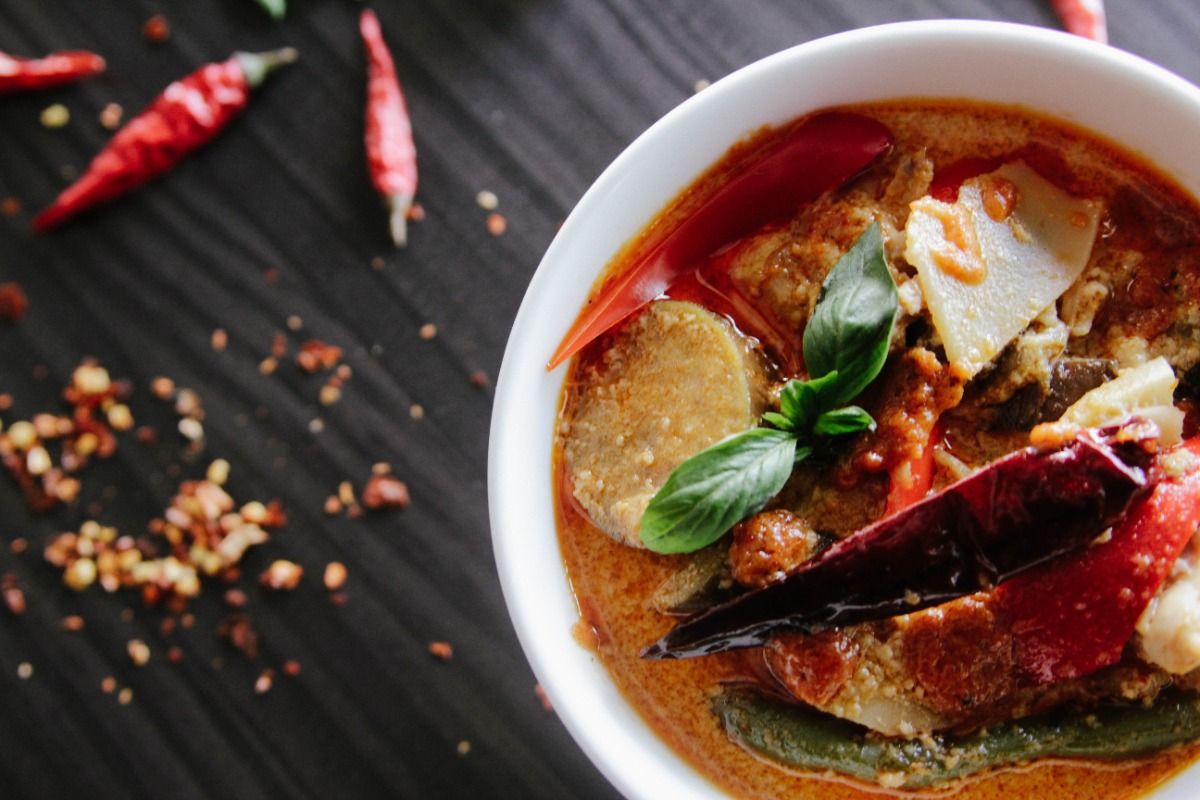
The benefits of eating spicy food range from weight loss benefits to better heart health.
Many of the positive side effects of consuming spicy food are derived from the Capsaicin chemical. While this substance is an irritant for mammals, it’s also rapidly gaining attention as a topical analgesic and a metabolism booster.
While not everyone naturally loves “feeling the burn” of spicy food, certain substances can have a direct impact on your wellbeing. The key to success is understanding where the advantages of spice come from, and how you can improve your spice tolerance for future meals.
Below, we’ll look at the top benefits of eating spicy food, and how you can train your palate to handle a little more heat.
1.Spicy Foods Boost Your Metabolism
Though additional research into this particular benefit of spicy foods is necessary, experts believe spicy food could significantly improve the performance of your metabolism by producing heat in the body and increasing your heart rate. Capsaicin, the central ingredient of chilli peppers, is a thermogenic substance capable of stimulating energy expenditure.
Your metabolism works by converting food to energy. The more energy you expend, the more food your system will convert, reducing the percentage of calories left behind to increase your weight. Studies have revealed the consumption of food containing capsaicin is associated with a lower prevalence of obesity. That means one of the primary benefits of eating spicy food is helping you manage your weight.
Double-blind tests also indicate the use of just 6mg of capsinoid per day for 12 weeks can reduce body weight by up to 0.9kg with no additional exercise or diet. Some experts also believe capsaicin can act as an appetite suppressant, reducing your desire to consume extra calories.

2.Improves Heart Health
Your diet has a significant impact on the health of your heart. One of the benefits of eating spicy food is that it can increase your circulation and lower your blood pressure. When you eat chilli peppers, for instance, this stimulates the release of compounds that expand your blood vessels. Additionally, capsaicin decreases inflammation, which has been linked to heart disease.
One study in 2017 found consumption of capsaicin on a daily basis may also reduce cholesterol. Participants taking 4mg capsules each day had lower blood cholesterol levels than their control group. Lower cholesterol is essential to preserving a healthy heart.
Another study in 2017 also revealed people eating “red hot chilli peppers” over a period of 6 years had a 13% lower incidence of death from causes related to heart health, such as stroke or heart disease. Combined with other heart-healthy strategies, namely regular exercise, the spice could help to keep your heart working properly.
3. Reduces Gut Inflammation
The discomfort you feel when you consume spicy food may make you think it will cause discomfort in your stomach, but research tells us another story. A study from 2006 found capsaicin can increase blood flow to the GI tract lining and protect against damage or ulcers.
Spicy food may even have something to offer people with Crohn’s disease. When capsaicin enters the digestive tract, it creates a chemical called anandamide, which helps reduce inflammation in the gut. Inflammation is common among people with Crohn’s disease, and similar conditions such as ulcerative colitis. The same reaction that calms the digestive tract and lowers inflammation can also help with reducing the risk of tumours, particularly among people with a genetically higher chance of tumours and stomach cancer.
Spicy food also acts as an antioxidant, reducing inflammation and helping with the digestive process by fighting off harmful bacteria which can prompt infection. If you have issues with irritable bowel disease, spicy food could be beneficial for you, provided these foods don’t trigger your condition or make it worse. A little experimentation may be helpful if your doctor approves it.
4.Could Increase Your Lifespan
A study among Chinese adults found those who consumed spicy foods in 2015 found those who ate spice almost every day had a 14% lower risk of premature death than adults eating spicy food only once per week. Researchers believe this has something to do with the anti-inflammatory effects of capsaicin, as well as reduced threats of obesity or heart disease.
Additionally, a 2017 study from Vermont found similar life expectancy results among people in the US. Notably, however, the researchers in these studies noted that spicy foods shouldn’t be considered a cure-all for health issues, as they don’t negate bad habits.
Combine spicy foods with regular exercise and a balanced, healthy diet, and you should see an improvement in your longevity.
5.Spice Can Help Relieve Some Pain
Eating spice may feel uncomfortable at first, but it can actually help alleviate pain. For years now, experts have recommended the use of creams and ointments enriched with capsaicin for the treatment of joint and muscle pain. Applied topically, capsaicin can block some of the pain messages sent by your nerves, reducing the sensation of pain.
One study from 2011 found a 60-minute application of a patch containing 8% capsaicin provided effective pain relief for patients with neuropathic pain for up to 12 weeks. The topical application of capsaicin can also assist with arthritis, muscle injuries, and fibromyalgia.

How to Increase Your Tolerance For Spicy Foods
The biggest challenge in leveraging the benefits of eating spicy food is figuring out how to add it to your diet in a comfortable way. If you’re dealing with muscle and joint pain, you can avoid the discomfort of eating spice entirely by purchasing prescription and over-the-counter creams that contain capsaicin extract.
Alternatively, people hoping to access the benefits of spice for heart health and gut balance will need to consider slowly exposing themselves to more heat in their food or taking regular supplements. On average, approximately 80% of people say they like some amount of spice, and over half eat spicy foods once per week. However, not everyone can manage spice well.
When you get your CircleDNA test results, you’ll be able to see how sensitive you’re likely to be to spice based on your genetics. You can then begin working on your tolerance based on your current level.
If you’re particularly susceptible to spice:
- Start small: Don’t try to eat a full chilli pepper straight away. Start by adding some black pepper to your pasta or sprinkling crushed red peppers into your soups. You can start by trying to hide the spice into meals you already like just a small amount at a time.
- Enjoy the flavour: Mindfulness makes a big difference to your eating experience. Focusing on aromas and tastes you enjoy when eating spicy food helps to take your mind away from the pain of the heat on your tongue. Try to describe as much as you can about the flavors of your food after eating in a food diary to hone your mindfulness skills.
- Increase spice levels slowly: Get to know Scoville levels and the measurement scales commonly used for spice. This way, you can begin with milder chillies like poblanos, before moving onto jalapenos, and habaneros. It needs to be a somewhat gradual process. If you encounter a pepper or spice too harsh for you, make a note and consider going back a step for a while.
- Keep it on the side of your plate: If you’re using spicy sauces in your food, don’t douse the rest of your meal with them. Instead, add the sauce to the side of your plate and dip your food in occasionally. This idea is particularly useful if you want to be control of how much spice you eat. If you simply can’t consume anymore, you’ll at least be able to finish your meal.
- Have coolants on-hand: Avoid using water to cool your mouth after you’ve had spice. A spoonful of sour cream or a little milk will be much more effective. Keeping a cooling substance nearby will give you an “out” when the spice is too much. You’ll often find coolants in Indian and Mexican restaurants, like cilantro or lime, to help diners manage the effects of spicy foods.
Remember, not everyone was built to handle spicy foods. If you’re really uncomfortable incorporating spice into your diet, you can always try supplements instead.





